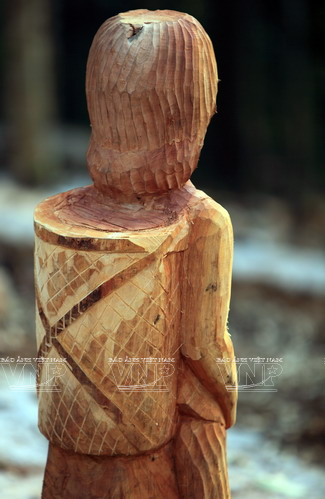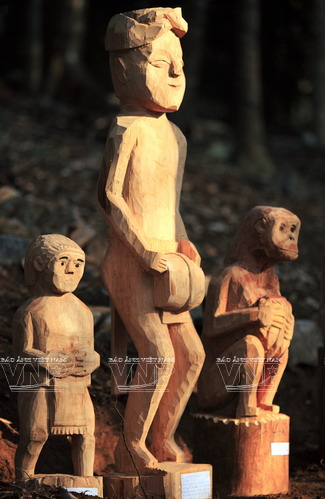 Artisans create unique works from tree trunks.  Sepulchre statues are displayed at the Mang Den National Eco-tourism Complex in Kon Tum Province.  Sepulchre statues bring a mysterious beauty to the Mang Den National Eco-tourism Complex. . |
 The familiar image of Gui (rattan basket)… |
 …and daily activities of the ethnic people are reflected through spulchre statues. |
 “Stork”. |
 Monkey eats corn in the field”. |
 “Owl”. |
 Diverse emotion on faces of the statues.. |
 A statue shows the community culture in the Central Highlands. |
 Artisan Kpa Phi (in Sa Thay District, Kon Tum Province) and his work. |
Regarding the art of sculpting, sepulchre statues are cylindrical, however, the way of sculpting statues using simple tools such as axes and hooks helps create unique shapes and reveal the mien of characters. Although the statues are made simply, viewers still easily perceive the soul of each statue.
The distinctive feature is that the statues are different than the others and there is only one version for a statue which has its own posture and feeling. These statues are created without any designs and drawings and each artisan has his own technique which is handed down orally.
To preserve and promote the unique art of the ethnic groups in the Central Highlands, the provinces in the area have made joint efforts to organize training courses to hand down techniques on sculpting sepulchre statues for the next generation.



